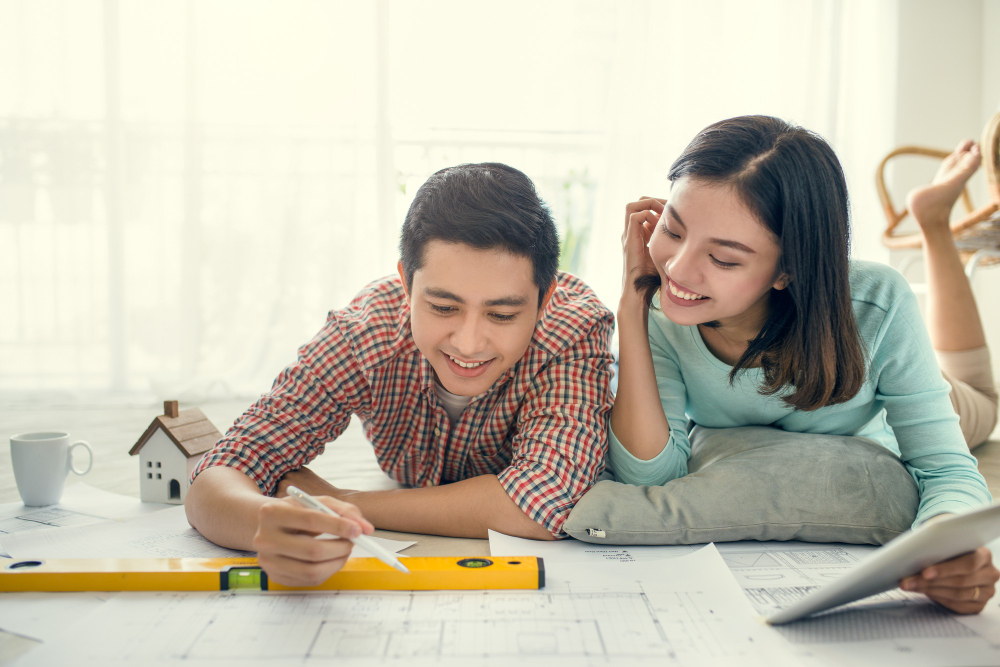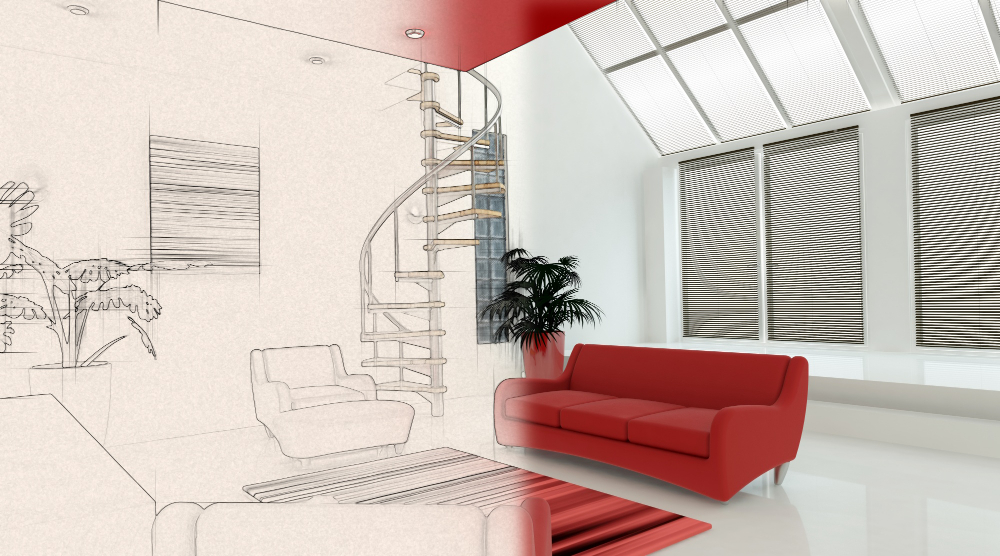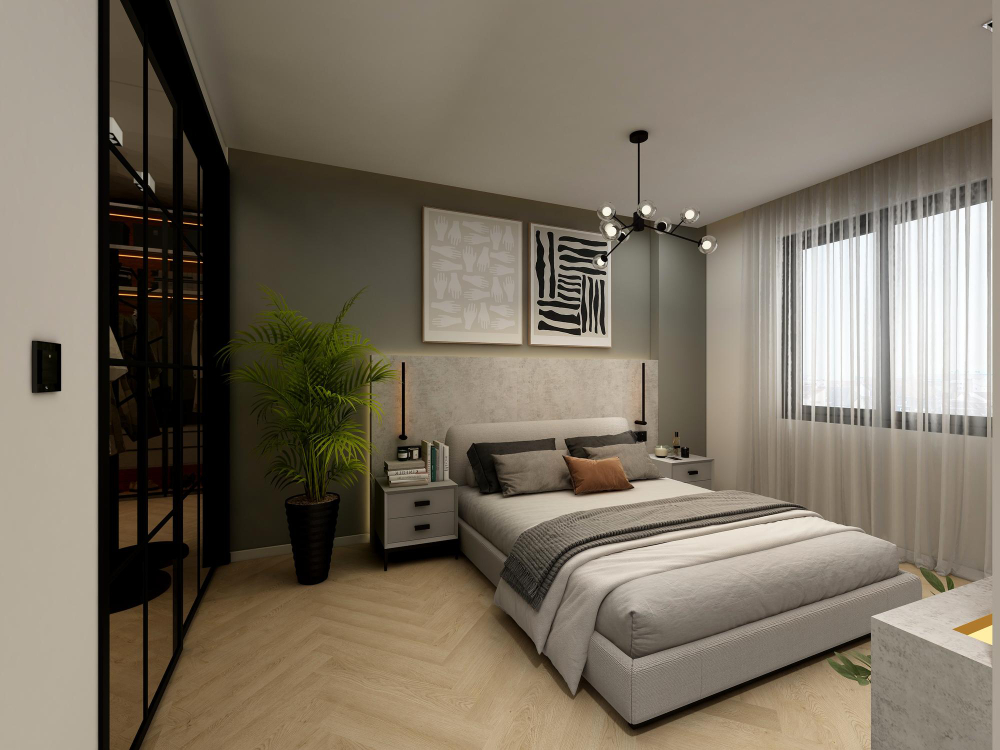How to Design Your Home with Intention and Style

Your home is a reflection of yourself. It’s where you live, eat, sleep and play. And for most people, it’s also their biggest investment. So it’s important to make sure your home reflects who you are as a person and can stand the test of time.
While there are plenty of ways to do this, one way to get started is by thinking about the design elements in your space—and how they add up to create an intentional and stylish living environment.
Create a Unique Living Space for your Dream Home
Home design is not just about what you see and touch. It’s also about how you feel in your space–and that can influence everything from your happiness to your productivity.
In this guide, we’ll walk through the process of designing a home with intention and style: from figuring out what kind of space suits your needs, to picking out the right furniture pieces and decorating schemes. You’ll learn how to create an environment that reflects who you are as an individual while supporting the way you live now–and looks great doing so!
Understanding Your Design Goals and Preferences
In order to create the home you’ve always wanted, it’s important to understand what your design goals are and how they relate to your lifestyle. Your design goals may be based on a personal style preference or a desire for specific functional qualities in the space.
Identifying your personal style
To identify your personal style, determine how it fits with the architecture of your home. Are there certain colors or patterns that resonate with you? Do certain architectural details inspire feelings of tranquility or excitement?
- Classic: A classic interior design style focuses on symmetry and traditional elements such as crown moldings and columns. It’s often best suited for older homes that were built in a specific period–for example, colonial-style houses from around the 1700s through 1800s will look great when decorated in this way.
- Modern: A modern interior design style takes inspiration from mid-century modernism but can also incorporate elements of other styles such as art deco or minimalist design. If this sounds like something that would work well with your home’s architecture, think about incorporating sleek lines into any furniture pieces or artwork choices. You might also try painting one wall white so it acts as an anchor point for all other colors throughout the space!
Determining your functional needs
Another key step to designing your home is to determine your functional needs. Space planning and organization are important factors in the design process, as well as comfort considerations such as accessibility.
- Space Planning: Create floor plans and determine how much space you have available, what types of rooms you need, where they should be located within your home, and how they connect with each other.
- Organization: Organization is key when it comes to creating a functional space that’s easy for everyone in your family or household members who visit often enough.
Establishing your design priorities
It is important to establish your design priorities for your own house without having to hire a professional designer.
What are the most important elements of a room or space? Is it the quality of light, or is it the feel of the space? Do you want to highlight an artwork or feature piece in your living room, or create an intimate seating area for guests? Your answers to these questions will help you determine what elements should take priority when designing your home like an interior designer.
Consider cost-effective solutions.
When considering budget constraints and cost-effective solutions, don’t forget about small changes that can make a big difference–like updating hardware on cabinetry doors and drawers or replacing old hardware and all the details. These options don’t require much time but will add value by adding interest and character through their design details.
Creating a Cohesive Design Plan
Creating a cohesive design plan is a significant step to creating your dream home. From the moment you walk in the front door, it should feel like you’re entering into a space that reflects who you are and what makes each member of your family happy.
Creating a cohesive design plan involves taking into account all aspects of home design: color scheme, furniture placement and style choices (including wall art), window treatments, and lighting fixtures.

Defining focal points in each room
As you begin to design your home, it’s important to think about what will be the focal point of each room. This can be a statement piece of furniture or an eye-catching artwork that makes you stop and look at it every time you walk into the room. A focal point can also be architectural features like high ceilings, arches, or windows that draw your eye upward.
Balancing form and function
It’s easy to get caught up in trends, but you should always consider how your furniture will function in your space. For example, a sofa that looks great might not be able to fit through doors or down hallways because of its size.
Incorporate storage solutions that complement the design and make sense for you: if you have kids who need lots of toys at hand, then perhaps an open shelving unit would work better than closed drawers; if things tend to go missing around your house more often than not, maybe it’s worth investing in some hooks near entryways so everyone can keep track of their belongings.
Developing a consistent color palette and theme
Creating a consistent color palette and theme is an important step toward creating a harmonious atmosphere in your home. You don’t want to go overboard with too many colors or patterns, because this can make the space feel cluttered. Instead, choose two complementary colors that work well together to form the foundation of your design scheme–you can use these as accents throughout the house or as main elements in certain rooms like curtains or upholstery.
To add depth and interest to each room’s decorating scheme, incorporate accessories like pillows and rugs in varying patterns or textures. Add depth by mixing different types of materials like wood finishes with metal accents like lamps and vases; this creates interest without feeling overbearing since each item has its own unique style
Intentional Design for Every Room
When you design your home with intention and style, it will be consistent throughout the house. This means that each room should have its own unique vibe and personality while still feeling like it belongs in the same home.
Living room: Creating a welcoming and comfortable space for relaxation and socializing
- Seating arrangements and layout: The size of the room, as well as how it’s laid out, will determine how many people can comfortably fit in your living room. If you have a small space, consider positioning furniture against walls or in corners to create more open seating areas.
- Lighting and mood-setting elements: Choose lights that are suited for reading or entertaining; these include floor lamps with adjustable heads or table lamps with dimmers so that you can control the amount of light in the room based on its use at any given time (i.e., bright enough for reading but dimmer when watching TV). If you have window treatments that are too darkly colored–or even blacked out entirely–they may make your room feel smaller than it actually is!
Bedroom: Designing a sanctuary for rest and rejuvenation
The bedroom is one of the most important spaces in your home. It’s where you go to rest and rejuvenate, so it should be a sanctuary for peace and serenity. When designing your bedroom, focus on creating a calm environment that has a welcoming feel.
To do this, choose colors and textures that are soothing rather than bright or bold. You can also incorporate functional storage solutions into your decorating plan to help keep clutter at bay–this will make the room look more spacious too.

Kitchen: Combining efficiency and aesthetic in the heart of the home
Your kitchen is the heart of your home, where you can create and share memories with family and friends. It’s also a space that demands efficiency, both in terms of design and function. A kitchen can also share the same space with the dining room. To ensure that your kitchen is both stylish and functional, it’s important to consider these key elements:
- Space-saving and ergonomic design elements
- Stylish materials for countertops and cabinets (countertops)
Bathroom: Creating a spa-like retreat with intentional design
Bathrooms are often overlooked when it comes to design, but they can be one of the most important rooms in your home. A good bathroom should be both functional and beautiful–a place where you can relax, unwind, or even get ready for work.
To create a spa-like retreat in your bathroom:
- Select fixtures that blend form and function. When choosing a faucet or showerhead, consider how much water pressure you need (and want) as well as what style fits best with your space’s decorating scheme. If possible, install low-flow fixtures so that every drop of water counts when it comes to conserving natural resources like water supply sources or electricity usage for heating elements such as hot tubs or showers equipped with multiple heads.
- Incorporate soothing colors and materials into the design process from start to finish–from paint colors on walls up through flooring materials beneath feet.
Personalizing Your Home With Unique Touches
One of the best ways to personalize your home is by adding meaningful items that have a story behind them. These items can be anything from family photos, art, and sculptures, or even decorative pieces such as candles or plants.
You don’t need to spend a lot of money on these items either! You can find some great pieces at thrift stores and flea markets for less than $20 USD each. If you’re looking for something specific but don’t want to spend too much money on it – try searching online for vintage shops in your area or ask around among friends who may have something similar already hanging in their homes.
Showcasing your interests and hobbies
One of the best ways to make your home feel like a reflection of who you are is to showcase your interests and hobbies. Whether it’s art, antiques, books, or sports memorabilia–displaying these items in your home will help create a more personalized space that reflects who you are as an individual.
In addition to displaying items from your own collection, there are also many ways that you can incorporate other people’s collections into the design of your living space:
Create dedicated spaces for each person in the family so every member has their own special place within the house where they can express themselves through decorating choices without stepping on anyone else’s toes!
Integrating meaningful items and memories
Your home is your sanctuary, so why not make it personal? You can do this by incorporating family heirlooms or antiques into your space. Think about what’s special to you and how those things can be incorporated into the design of your home.
If you have an old family photo that has been passed down through generations, consider framing it in a way that makes it stand out from other frames on the wall–or even hanging it up in a place where everyone can see it when they walk in the door.
This will create an intentional focal point for guests who visit your house without having to spend money on new pieces of furniture like end tables or coffee tables; instead, use these sentimental items as anchors throughout every room in which they live so visitors know exactly what kind of person lives there.
Utilizing DIY projects to add character and charm
DIY projects are a great way to add character and charm to your home. You can repurpose furniture, accessories, and artwork that you already own or find at a thrift store. The possibilities are endless when it comes to creating custom pieces that fit into your aesthetic style.
If you’re looking for inspiration on how to use DIY projects in your space:
- Upcycle old pieces of furniture by painting them a new color or covering them with new fabric; this is an easy way to create unique pieces without spending money on something brand new.
- If repurposing isn’t really your thing, consider making custom artwork using items like vinyl decals or stencils instead–the results will still look stylish.
Home Design Ideas for Any Floor Plan
We hope that you’ve found this article helpful. We know that house design can be a daunting task with so many decisions to make, but the most important thing is to start with intention and stay true to your vision. Take your time, do some research, ask for feedback from trusted friends and family members–and above all else: enjoy the process for your room designs.




